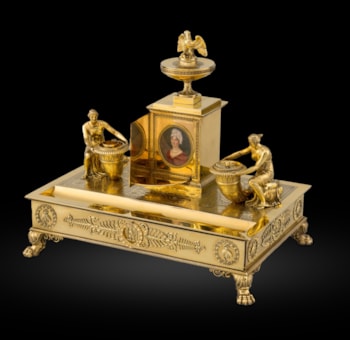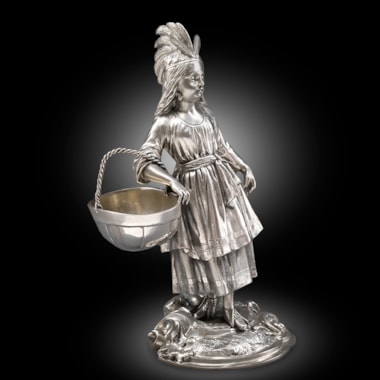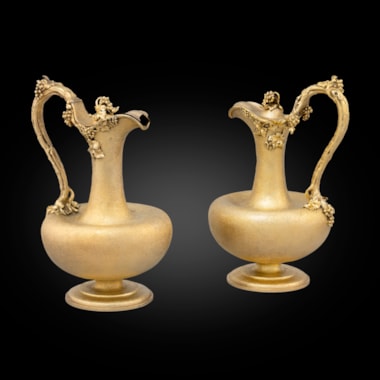The Royal goldsmith has produced a masterpiece in this ewer. It sits on a square pedestal foot with gadrooned edge and fabulously chased flowers and foliate décor. The main body raised and chased in a similar way with blooming roses, rosehips and spring flowers and tendrils forming a cartouche to the front with the engraved coronet, motto, and crest of Baron Ducie. The reeded rim of the main body terminating in a grotesque mask below the lip of the ewer.
The cast scrolling handle adjoining the main body with a lions gaping mouth the top of the handle formed a dolphin with water gushing from its mouth.
The son of a Midlands merchant, Thomas Heming was apprenticed to Edmund Bodington on March 7, 1738, and turned over on the same day to the Huguenot goldsmith Peter Archambo. He registered his first mark in June 1745; in 1760 he was appointed principal goldsmith to King George III, in which capacity he was responsible for supplying regalia and plate required for the coronation. Heming held this appointment until 1782, when he was ousted after an investigation into his apparently excessive charges. Grimwade (1976, p. 543) comments that "some of his earlier surviving pieces in the Royal collection show a French delicacy of taste and refinement of execution which is unquestionably inherited from his master Archambo." Among Heming's outstanding works are a silver-gilt toilet service made for Queen Caroline of Denmark in 1766 (Dankse Kunstidustrimuseum, Copenhagen; Hernmarck 1977, pl. 727) and a wine cistern of 1770, made for Speaker Brownlow (Belton House, Lincolnshire; Grimwade 1974, pl. 12).
You May Also Like








































































